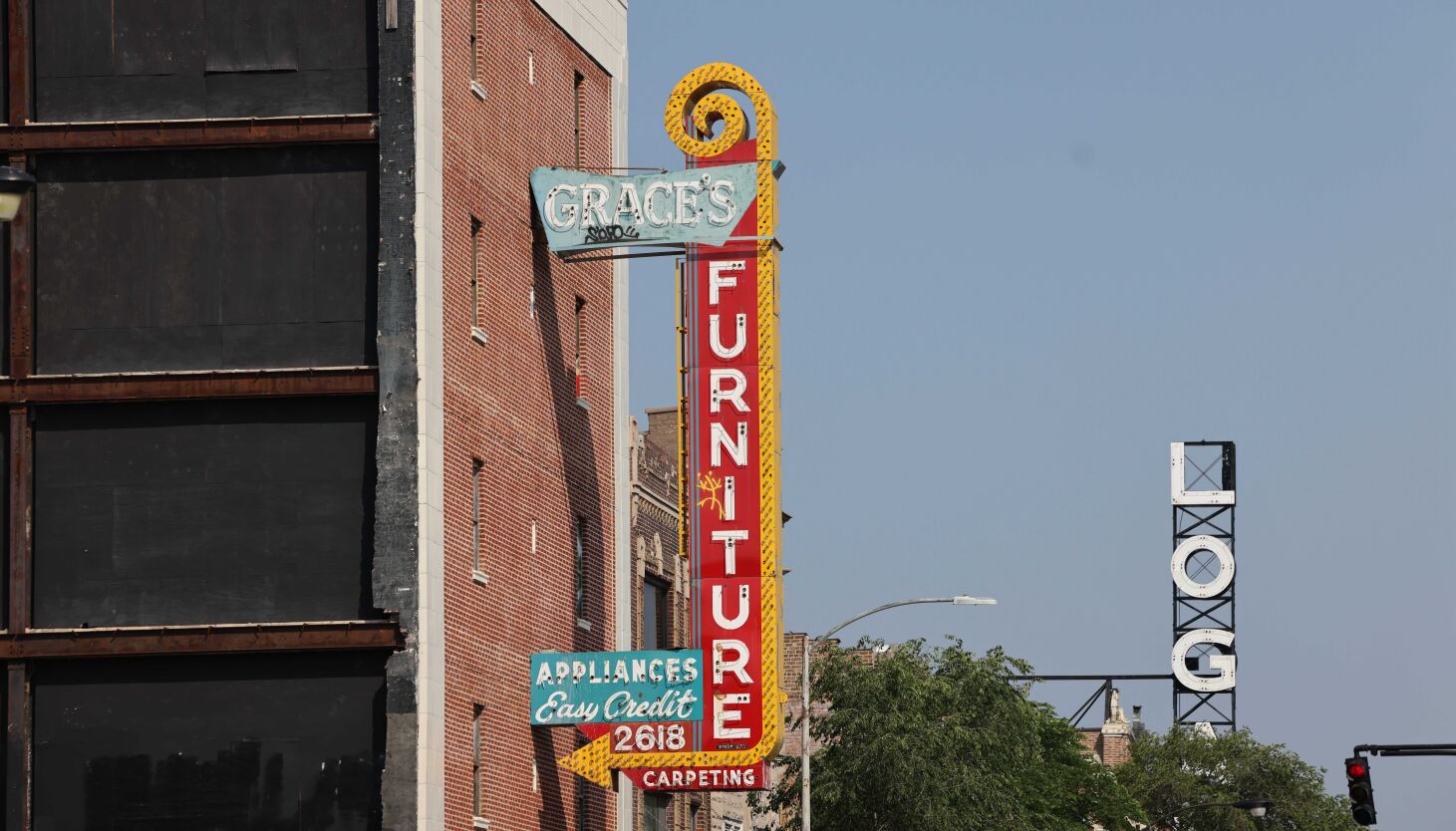In the 2012 book “Signs, Streets and Storefronts,” author Martin Treu wrote that old neon signs “often serve as important urban landmarks.”
They “help to visually identify key locations in a city, marking them with distinct visual icons,” he wrote, and give streets “character and animation, reinforcing local history.”
Mayor Brandon Johnson and his new City Council floor leader obviously agree.
At Wednesday’s Council meeting, Johnson introduced an ordinance to protect Chicago’s most iconic “vintage signs,” including the Grace’s Furniture sign in Logan Square.
The ordinance includes a framework that would allow commercial signs that are “at least 30 years old” and have “proven to represent a degree of character and nostalgia” to remain “indefinitely,” subject to city review and a five-year, renewable permit.
Currently, anyone who buys a property with a historic sign must take it down if the prior owner allowed the sign permit to expire.
That threatens to deprive Chicago of some of its character and history, much like tearing down a landmark building.
“Our communities are home to so many beautiful, historic signs that new business owners would like to incorporate into their small businesses,” said 35th Ward Ald. Carlos Ramirez-Rosa, the floor leader and Zoning Committee chair who presided over his first meeting Tuesday.
“This change in the city code would allow for historic signs to receive a new classification as a vintage sign. The sign would have to be more than 30 years old. They have to be able to prove that the sign is safe and well-maintained. And if they can prove those things, then they can get a permit to keep that sign,” Ramirez-Rosa said.
Like Treu, Ramirez-Rosa pointed to the Grace’s Furniture sign in his Logan Square ward as a “notable example” of a vintage sign worth saving.
“It’s a large sign that’s lit up. It’s historic. Under the existing city code, that sign has to be taken down. But the developer, working with the community, has chosen to keep that historic sign and incorporate it into the new business and redevelopment plan,” Ramirez-Rosa said. “This ordinance would allow businesses like that to keep the historic sign.”
Johnson elaborated on his motivation after the Council meeting.
“The intention to make sure our signs are safe and strong and sound cannot come at the expense removing the unique character that makes us the remarkable, world-class city that we are,” the mayor said. “I believe in throwback. I’m from the ’80s and ’90s. Apparently, that’s back in style. So I’m officially old-school.”
The ordinance also addresses murals that businesses have been pressured to erase because they fall into a murky category amid arguments they are advertising signs — not public art.
Ramirez-Rosa recalled the controversy surrounding Pilsen-based Memo’s Hot Dog’s at 1447 W. 18th Street.
The hot dog stand owned by three generations of the same family was slapped with fines — and initially unable to renew its business license — after city inspectors ruled the colorful mural painted on the restaurant’s exterior was an advertising sign.

A mural depicts Cheech and Chong on the side of Memo’s Hot Dogs, 1447 W. 18th St. in Pilsen.
Tyler Pasciak LaRiviere/Sun-Times
The mural features Cheech and Chong and hot dogs but did not include the name, “Memo’s Hot Dogs.”
“The city inspector ruled that they were unable to have that mural up because they sold hot dogs and they had a mural of hot dogs, and therefore, they were advertising their business,” Ramirez-Rosa said.
“This update will allow for a business to depict the items that they sell and incorporate them into an artistic mural providing them with more interesting options, so long as they don’t directly advertise their business in the mural,” he said.
The ordinance also confronts what Ramirez-Rosa called “ghost signs” painted on the sides of buildings, often more than a century ago. They get painted over or hidden by a brick wall. When the paint fades or the brick wall “gets taken away,” the old, faded sign is revealed for all to see, Ramirez-Rosa said.
“Under the existing city code, that would be considered an advertisement you cannot have up,” he said. “This change will allow building owners and business owners to get a permit for that sign indicating its historic nature.”

